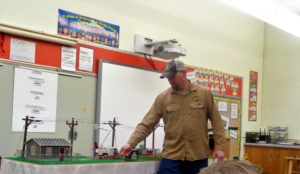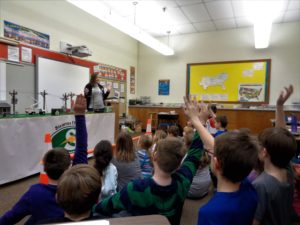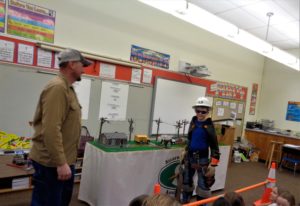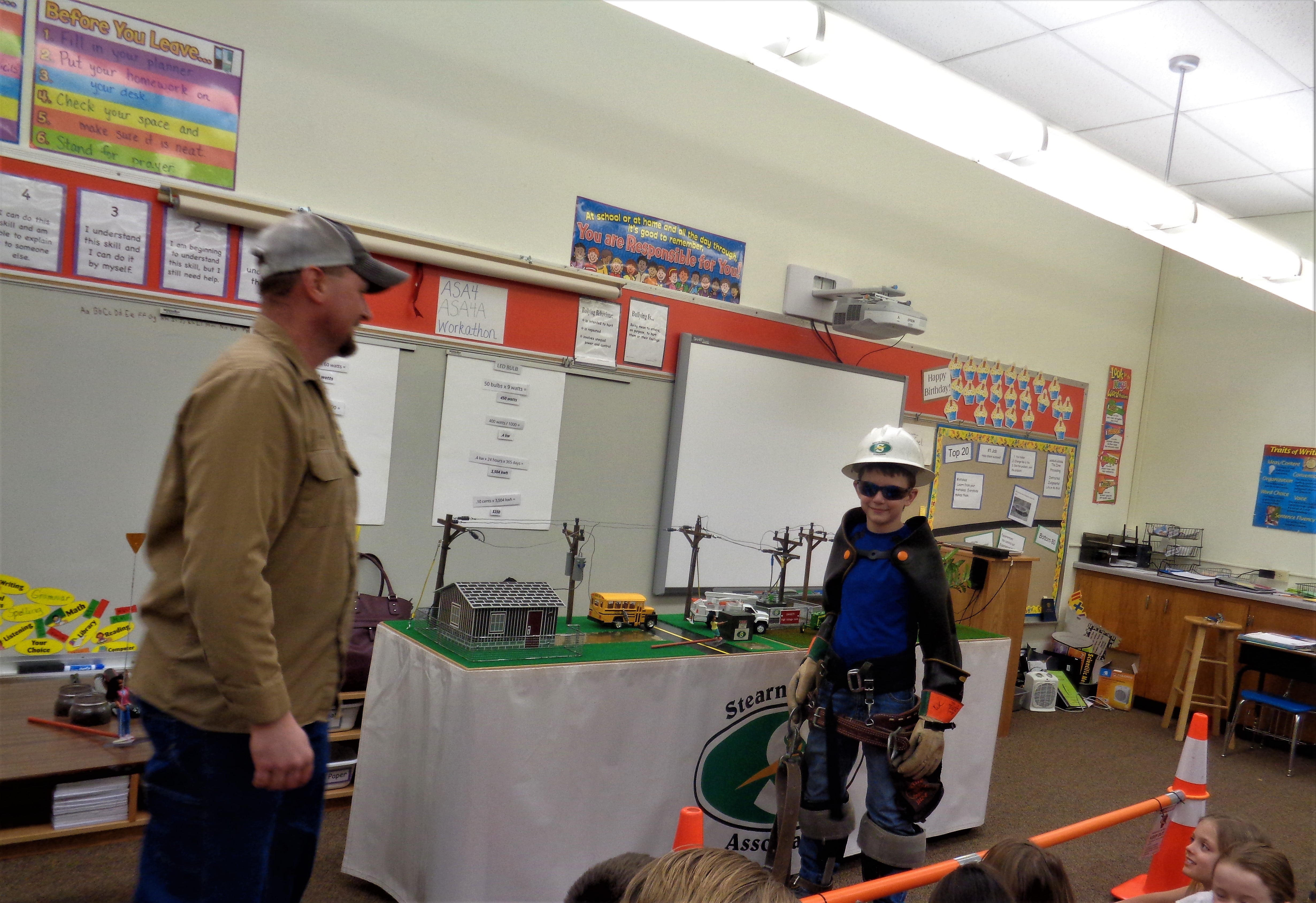by Mollie Rushmeyer
news@thenewsleaders.com
With more than 30,000 electric shock accidents and 2,555 children treated every year for shock injuries because of wall outlets, according to the Electrical Safety Foundation International, Stearns Electric Association is seeking to educate area children about safety around electricity as well as energy efficiency.
For Theresa Fleege, fourth-grade teacher at All Saints Academy in St. Joseph, the Stearns Electric presentation on Feb. 8, fit perfectly with the science unit they just completed about electricity.
The day of the presentation, ‘electric’ excitement buzzed through the air as the fourth-graders prepared to hear from Whitney Ditlevson, communications and marketing specialist, and Mike Siemers, lineman.
Ditlevson covered some basics of electricity by talking about the three types – static (not moving), current (which is either alternating current flowing both ways or direct current, only flowing one way like a battery) and natural electricity like lightning. To compare, a power outlet in a house contains 120 volts, where a lightning bolt contains anywhere from 100 million to 1 billion volts.
One way families can easily cut down on the energy they use in their homes, Ditlevson said, is by switching to LED lights. For example, if each of the fourth-graders were to put in an LED light that day, Ditlevson said, they wouldn’t have to change it again until high school or even later. Incandescent light bulbs were so cheap to make, but so inefficient, they aren’t made anymore, though people may still find them in stores because they were manufactured in such abundance.
There are seven fuels that create energy — water, air, wind, solar, nuclear, trash (by burning) and coal. Ditlevson said 46 percent of Stearns Electric energy comes from a coal-fired plant in North Dakota.
When the energy from the coal is turned into electricity that flows into our homes, Siemers said it goes through an electrical wire. Some wires, like the ones flowing through big metropolitan cities, are buried four feet beneath the ground. This can make it tricky to work on them if something goes wrong. He said we typically see wires connected by poles in our area.
What people, especially children, need to be aware of, Siemers said, is these wires carry 7,200 volts of electricity. It’s the transformers, the gray containers on the poles or the big boxes on the ground, that turn the 7,200 volts into the 120 volts in houses. That’s why, if a wire has fallen to the ground or a transformer is open or broken, children and adults should stay away and call 911 immediately.
Electricity is a silent killer. You can’t see it (until it comes in contact with the ground and makes the spark), smell it or hear it. That’s what makes electricity so dangerous, Siemers said, especially to children, and all the more reason to learn about how to be safe around it.
During the demonstration portion, a scale model of power lines, house, ground transformers as well as a bus and people were used to show what happens if a person or thing gets too close to electricity. The class had a big reaction to the small charge ‘zap’ each pretend person or thing received, with lots of gasps. Fleege said she hoped it would help the kids take this seriously, and give them a healthy appreciation for the power and potential danger electricity holds.
Siemers showed the class the heavy safety equipment he has to wear as a lineman in order to work on the electrical poles, even letting fourth-grader Kolton Harren, 10, of Holdingford demonstrate the gear. Luckily for Harren, Siemers didn’t pack on all of the tools that normally go with it, making the whole ensemble weigh around 75 pounds.
Both Ditlevson and Siemers are doing these presentation for their first time this year and both said it has been a joy to go out to talk with the kids. They’ll visit the 38 schools in their company district by the end of February.
“I have young children at home too,” Siemers said. “This is such dangerous stuff. I want the kids to be safe.”
Ditlevson said, “We do this to educate the students who will hopefully go back and educate their families on how to be safe.”
And what was the consensus from the All Saints Academy fourth-graders about the presentation? The resounding, “Whoa!” and audience engagement throughout, especially during the electric shock demonstration, spoke for itself.

Stearns Electric Association lineman Mike Siemers demonstrates the seriousness of safety around electricity by using a small electric charge with a scale model. Judging by the gasps of the fourth-grade crowd, Siemers has their attention and proves his point.

Whitney Ditlevson, communications and marketing specialist for Stearns Electric Association, talks with Theresa Fleege’s All Saints Academy fourth-grade class Feb. 8 about the energy efficiency benefits of using LED lightbulbs.

During an electricity safety and energy-efficiency presentation given by Stearns Electric Association, lineman Mike Siemers (left), shows St. Joseph All Saints Academy student Kolton Harren (right), 10, of Holdingford the safety gear required of lineman to climb the utility poles and fix or install electrical wires.




